您好,登录后才能下订单哦!
小编给大家分享一下springboot springsecuroty中注销和权限控制问题的示例分析,相信大部分人都还不怎么了解,因此分享这篇文章给大家参考一下,希望大家阅读完这篇文章后大有收获,下面让我们一起去了解一下吧!
src/main/java/com/lv/config/SecurityConfig.java
package com.lv.config;
import org.springframework.security.config.annotation.authentication.builders.AuthenticationManagerBuilder;
import org.springframework.security.config.annotation.web.builders.HttpSecurity;
import org.springframework.security.config.annotation.web.configuration.EnableWebSecurity;
import org.springframework.security.config.annotation.web.configuration.WebSecurityConfigurerAdapter;
import org.springframework.security.crypto.bcrypt.BCryptPasswordEncoder;
//AOP : 拦截器!
@EnableWebSecurity
public class SecurityConfig extends WebSecurityConfigurerAdapter {
//授权
@Override
public void configure(HttpSecurity http) throws Exception {
//首页所有人都可以访问,功能页只有对应的有权限的人才能访问
//请求授权的规则~(链式编程)
http.authorizeRequests()
.antMatchers("/").permitAll()
.antMatchers("/level1/**").hasRole("vip1")
.antMatchers("/level2/**").hasRole("vip2")
.antMatchers("/level3/**").hasRole("vip3");
//没有权限默认会跳转到登录页,需要开启登录页面
http.formLogin();
//注销,开启了注销功能,跳到首页
http.logout().logoutSuccessUrl("/");
//防止跨站工具, get,post
http.csrf().disable();//关闭csrf功能,注销失败可能的原因
}
//认证,springboot 2.1.x 可以直接使用
//密码编码:PasswordEncoder
//在Spring Security 5.0+ 新增了很多加密方法~
protected void configure(AuthenticationManagerBuilder auth) throws Exception {
//这些数据正常应该从数据库中读
auth.inMemoryAuthentication().passwordEncoder(new BCryptPasswordEncoder())
.withUser("lv").password(new BCryptPasswordEncoder().encode("123456")).roles("vip2","vip3")
.and()
.withUser("root").password(new BCryptPasswordEncoder().encode("123456")).roles("vip1","vip2","vip3")
.withUser("guest").password(new BCryptPasswordEncoder().encode("123456")).roles("vip1");
}src/main/resources/templates/index.html
<!--登录注销-->
<div class="right menu">
<div>
<a class="item" th:href="@{/toLogin}">
<i class="address card icon"></i>登录
</a>
</div>
<div>
<a class="item" th:href="@{/logout}">
<i class="sign-out icon"></i>注销
</a>
</div>
</div>访问登录页面,登录 guest 账户,该账户可以访问 level1的页面
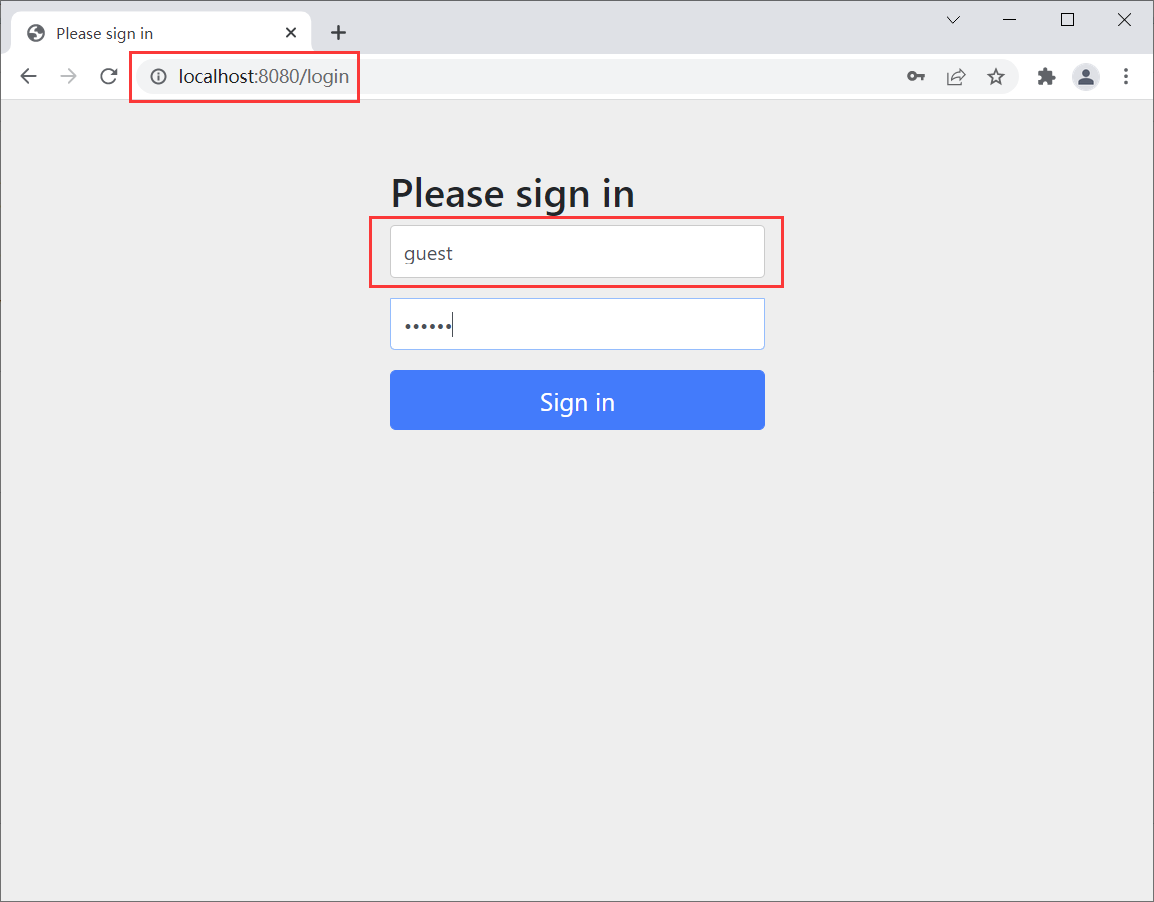
登录成功后,点击 level1的链接,成功跳转到 level 页面,然后点击注销按钮
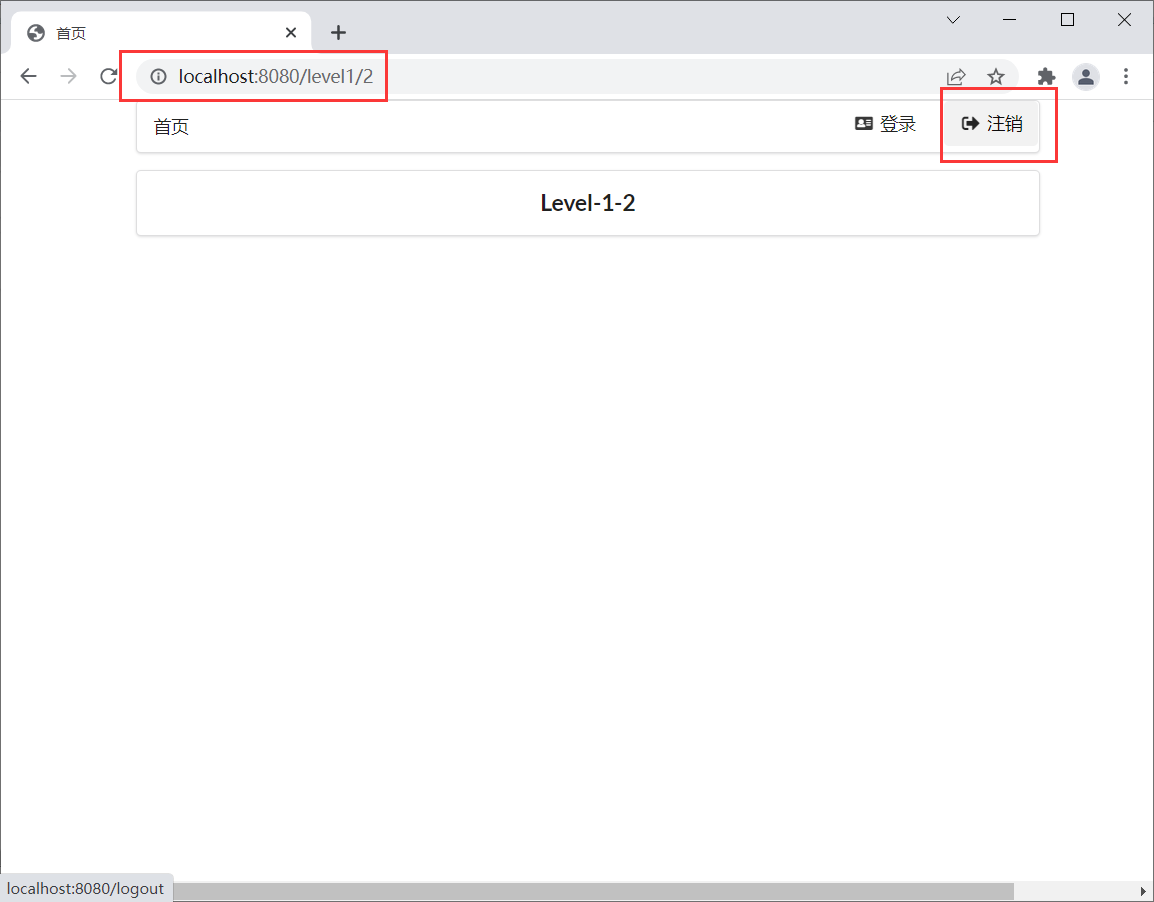
弹回到首页,再次点击点击 level1 页面
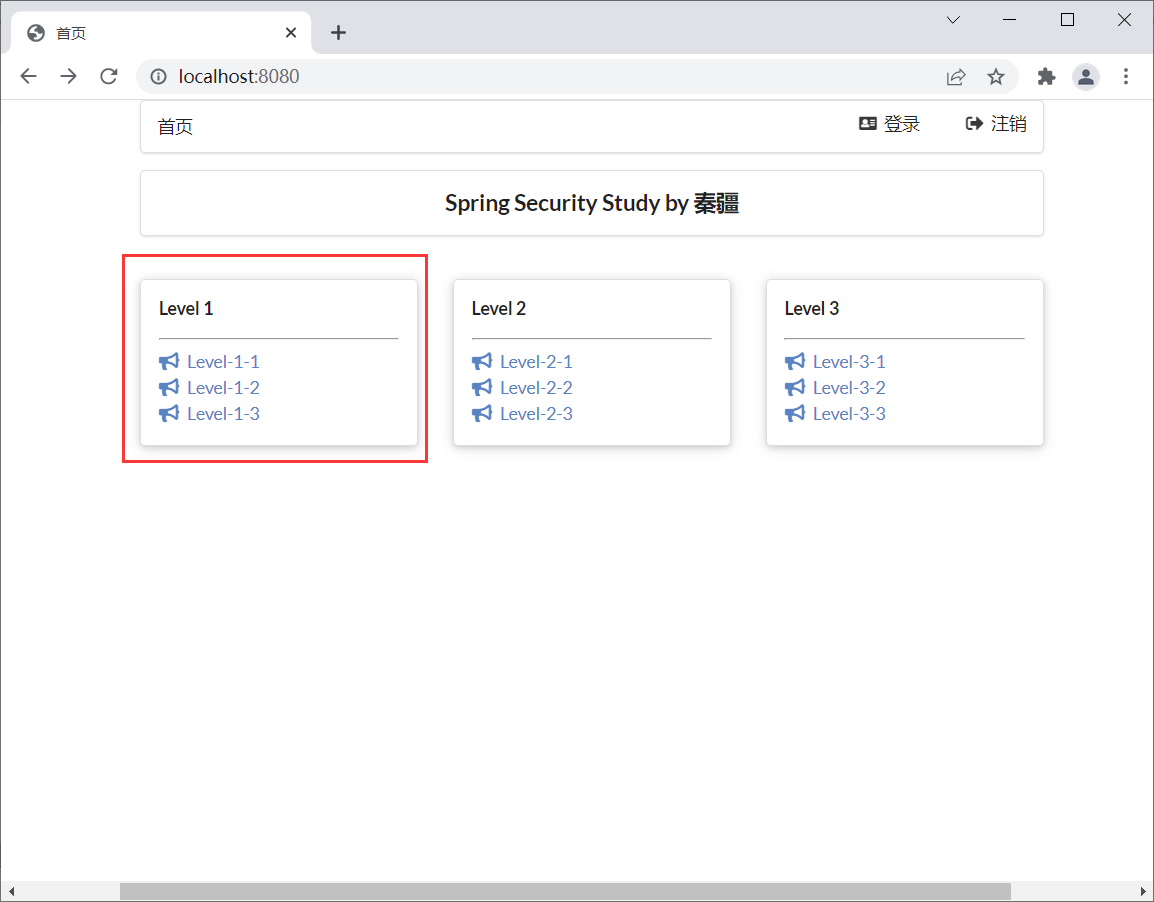
跳转到了登录页面
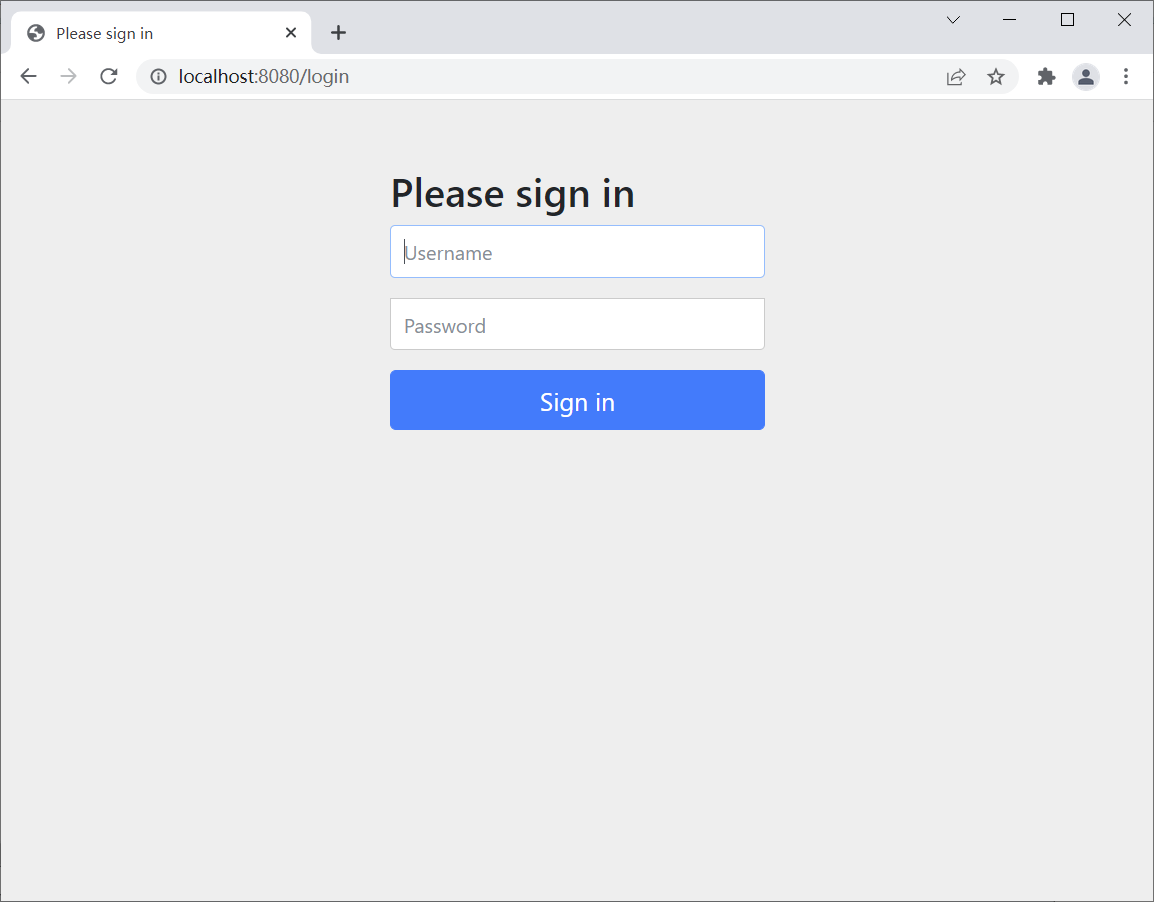
说明账户注销成功
pom.xml
<!-- springSecurity和thymeleaf整合包 --> <dependency> <groupId>org.thymeleaf.extras</groupId> <artifactId>thymeleaf-extras-springsecurity4</artifactId> <version>3.0.2.RELEASE</version> </dependency>
pom.xml
<parent> <groupId>org.springframework.boot</groupId> <artifactId>spring-boot-starter-parent</artifactId> <version>2.0.9.RELEASE</version> <relativePath/> <!-- lookup parent from repository --> </parent>
必须将springboot的版本降到2.0.9以下,否则 sec:authorize="isAuthenticated()" 不会生效.版本降低后,需要手动导入junit依赖,否则测试类会报错
<dependency> <groupId>org.junit.jupiter</groupId> <artifactId>junit-jupiter</artifactId> <version>RELEASE</version> <scope>test</scope> </dependency>
在index.html的头文件中添加springsecurity和thymeleaf的整合约束
src/main/resources/templates/index.html
<html xmlns:th="http://www.thymeleaf.org" xmlns:sec="http://www.thymeleaf.org/thymeleaf-extras-springsecurity4">
主要修改两部分,一部分是登录状态下显示用户名,和注销按钮,未登录显示登录按钮 通过 sec:authorize="isAuthenticated()" 实现.另一部分是根据登录用户的权限显示不同的页面菜单,通过 sec:authorize="hasRole('vip1')" 实现.
src/main/resources/templates/index.html
<!DOCTYPE html> <html xmlns:th="http://www.thymeleaf.org" xmlns:sec="http://www.thymeleaf.org/thymeleaf-extras-springsecurity4"> <head> <meta charset="UTF-8"> <meta name="viewport" content="width=device-width, initial-scale=1, maximum-scale=1"> <title>首页</title> <!--semantic-ui--> <link href="https://cdn.bootcss.com/semantic-ui/2.4.1/semantic.min.css" rel="stylesheet"> <link th:href="@{/qinjiang/css/qinstyle.css}" rel="stylesheet"> </head> <body> <!--主容器--> <div class="ui container"> <div class="ui segment" id="index-header-nav" th:fragment="nav-menu"> <div class="ui secondary menu"> <a class="item" th:href="@{/index}">首页</a> <!--登录注销--> <div class="right menu"> <!--如果未登录:显示登录按钮--> <div sec:authorize="!isAuthenticated()"> <a class="item" th:href="@{/toLogin}"> <i class="address card icon"></i>登录 </a> </div> <!--如果已登录:显示用户名和注销按钮--> <div sec:authorize="isAuthenticated()"> <a class="item"> 用户名:<span sec:authentication="name"></span> </a> </div> <div sec:authorize="isAuthenticated()"> <a class="item" th:href="@{/logout}"> <i class="sign-out icon"></i>注销 </a> </div> </div> </div> </div> <div class="ui segment" > <h4>Spring Security Study by 秦疆</h4> </div> <div> <br> <div class="ui three column stackable grid"> <!--菜单根据用户的角色动态实现--> <div class="column" sec:authorize="hasRole('vip1')"> <div class="ui raised segment"> <div class="ui"> <div class="content"> <h6 class="content">Level 1</h6> <hr> <div><a th:href="@{/level1/1}"><i class="bullhorn icon"></i> Level-1-1</a></div> <div><a th:href="@{/level1/2}"><i class="bullhorn icon"></i> Level-1-2</a></div> <div><a th:href="@{/level1/3}"><i class="bullhorn icon"></i> Level-1-3</a></div> </div> </div> </div> </div> <div class="column" sec:authorize="hasRole('vip2')"> <div class="ui raised segment"> <div class="ui"> <div class="content"> <h6 class="content">Level 2</h6> <hr> <div><a th:href="@{/level2/1}"><i class="bullhorn icon"></i> Level-2-1</a></div> <div><a th:href="@{/level2/2}"><i class="bullhorn icon"></i> Level-2-2</a></div> <div><a th:href="@{/level2/3}"><i class="bullhorn icon"></i> Level-2-3</a></div> </div> </div> </div> </div> <div class="column" sec:authorize="hasRole('vip3')"> <div class="ui raised segment"> <div class="ui"> <div class="content"> <h6 class="content">Level 3</h6> <hr> <div><a th:href="@{/level3/1}"><i class="bullhorn icon"></i> Level-3-1</a></div> <div><a th:href="@{/level3/2}"><i class="bullhorn icon"></i> Level-3-2</a></div> <div><a th:href="@{/level3/3}"><i class="bullhorn icon"></i> Level-3-3</a></div> </div> </div> </div> </div> </div> </div> </div> <script th:src="@{/qinjiang/js/jquery-3.1.1.min.js}"></script> <script th:src="@{/qinjiang/js/semantic.min.js}"></script> </body> </html>
未登录页面
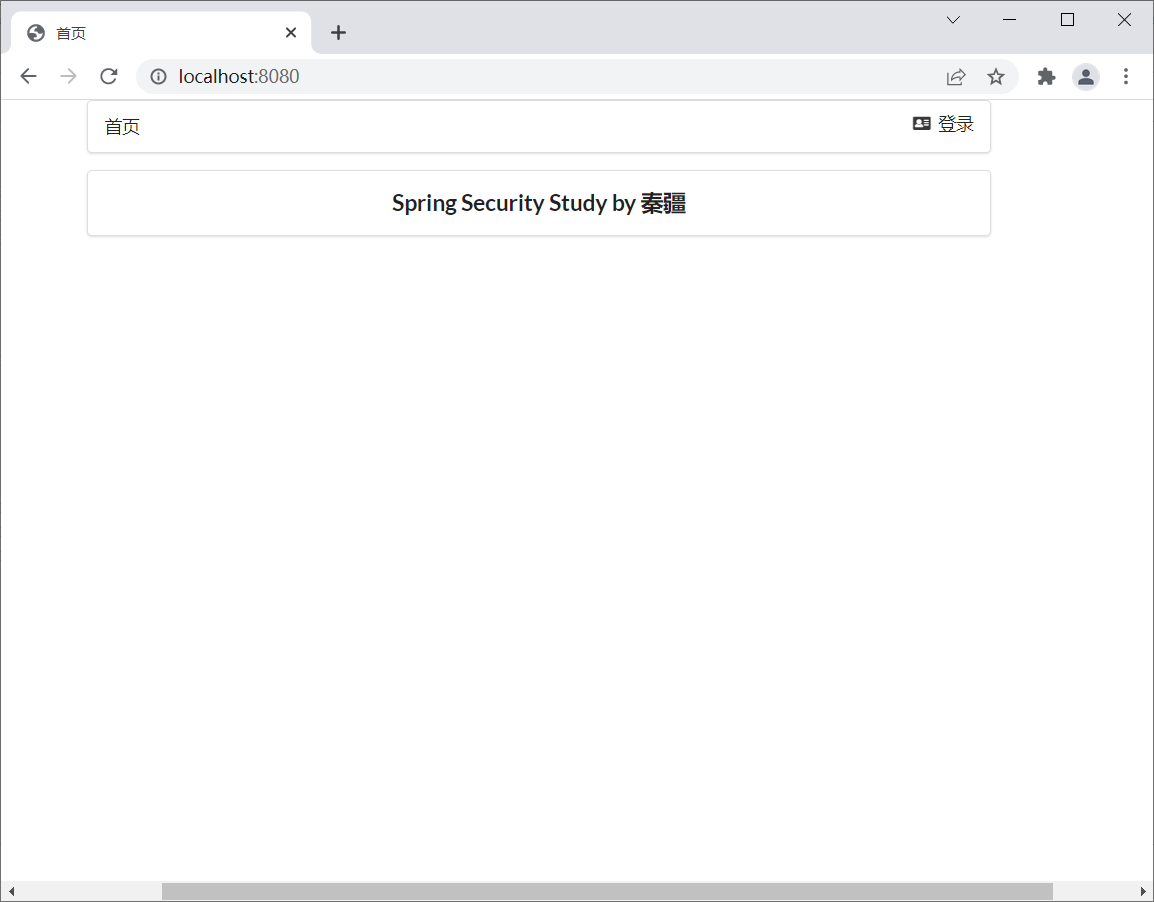
登录 lv 用户的页面
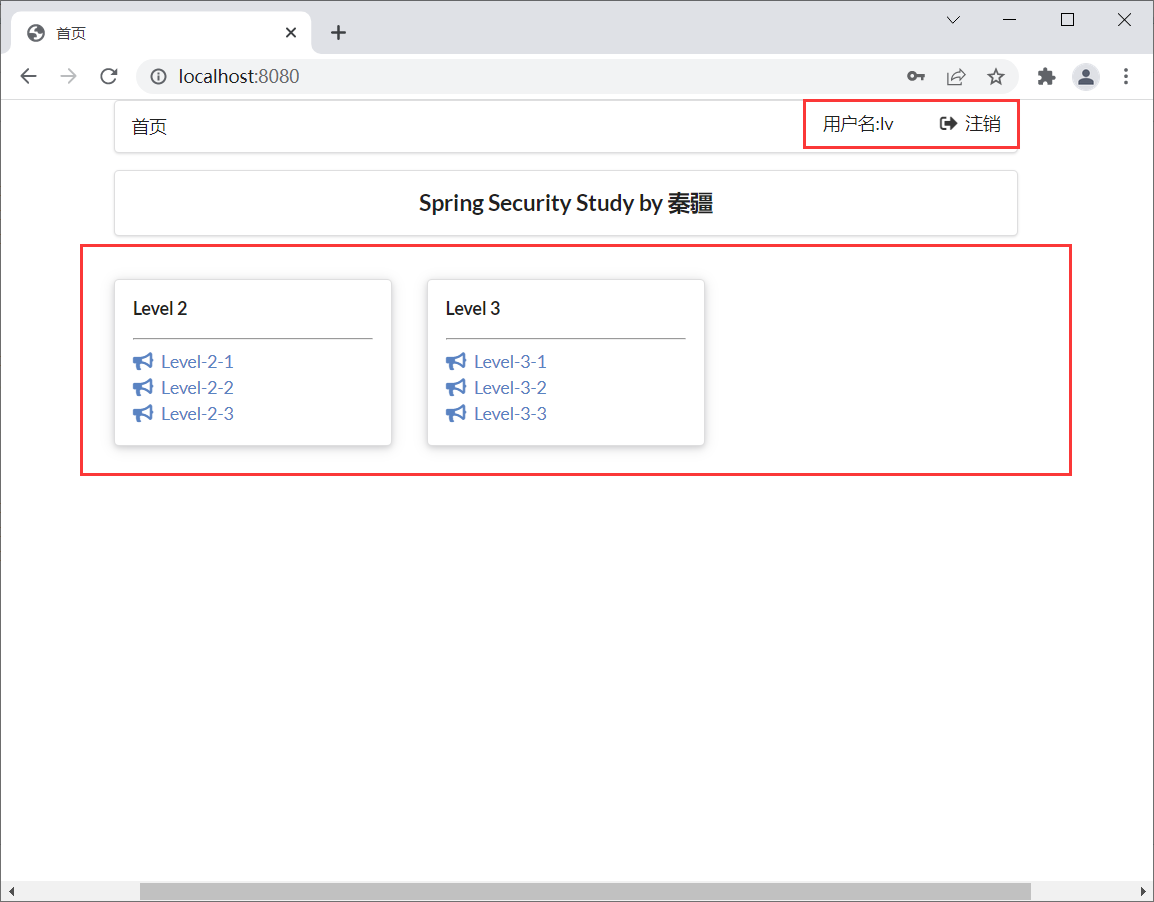
登录 geust 用户的页面
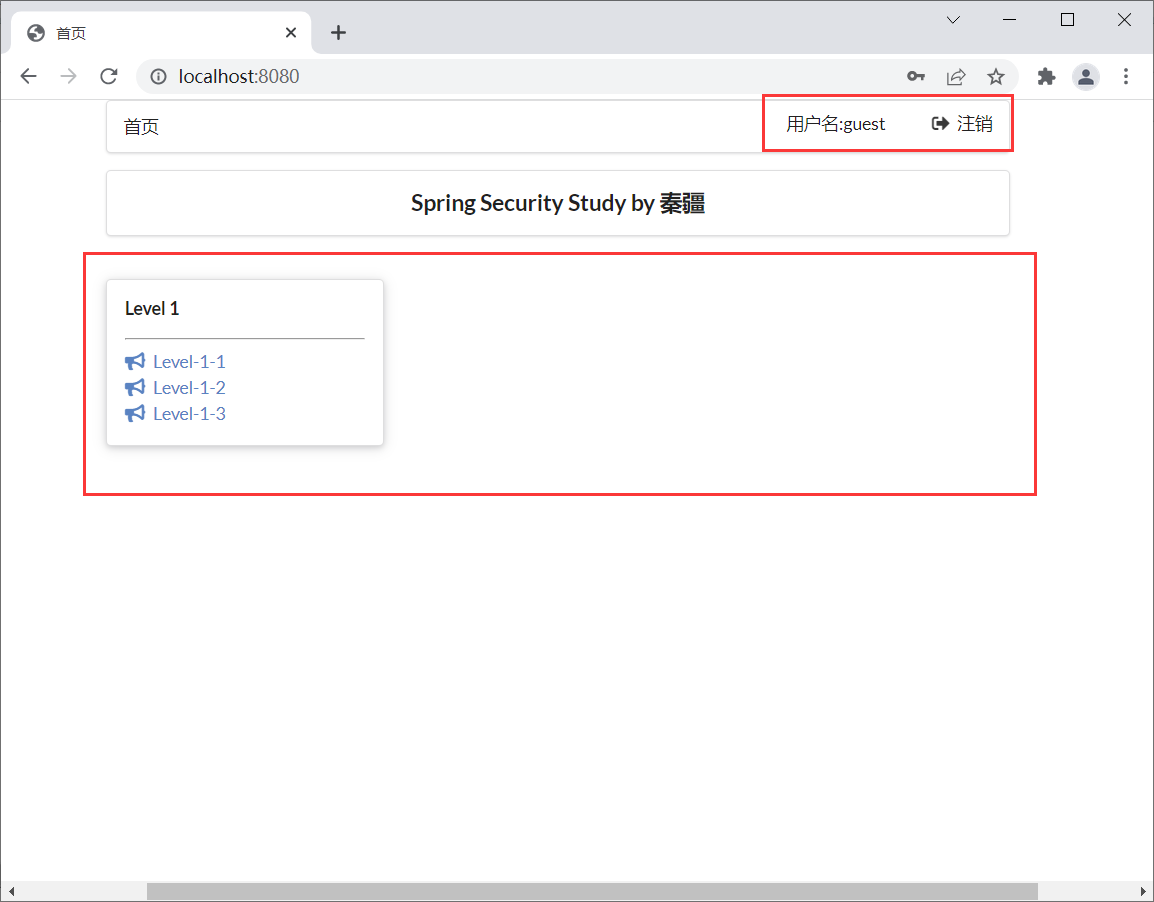
登录 root 用户的页面
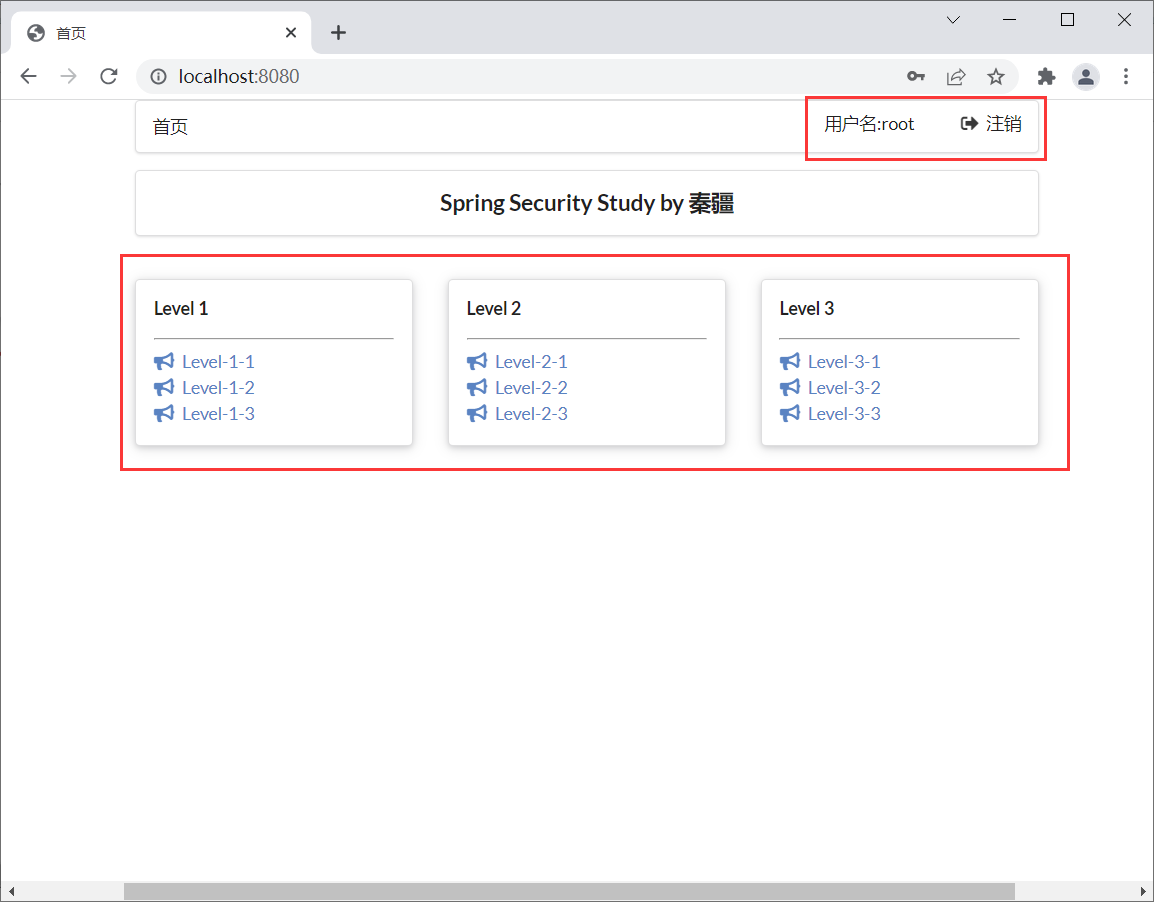
页面显示都不同,权限控制成功实现
以上是“springboot springsecuroty中注销和权限控制问题的示例分析”这篇文章的所有内容,感谢各位的阅读!相信大家都有了一定的了解,希望分享的内容对大家有所帮助,如果还想学习更多知识,欢迎关注亿速云行业资讯频道!
免责声明:本站发布的内容(图片、视频和文字)以原创、转载和分享为主,文章观点不代表本网站立场,如果涉及侵权请联系站长邮箱:is@yisu.com进行举报,并提供相关证据,一经查实,将立刻删除涉嫌侵权内容。